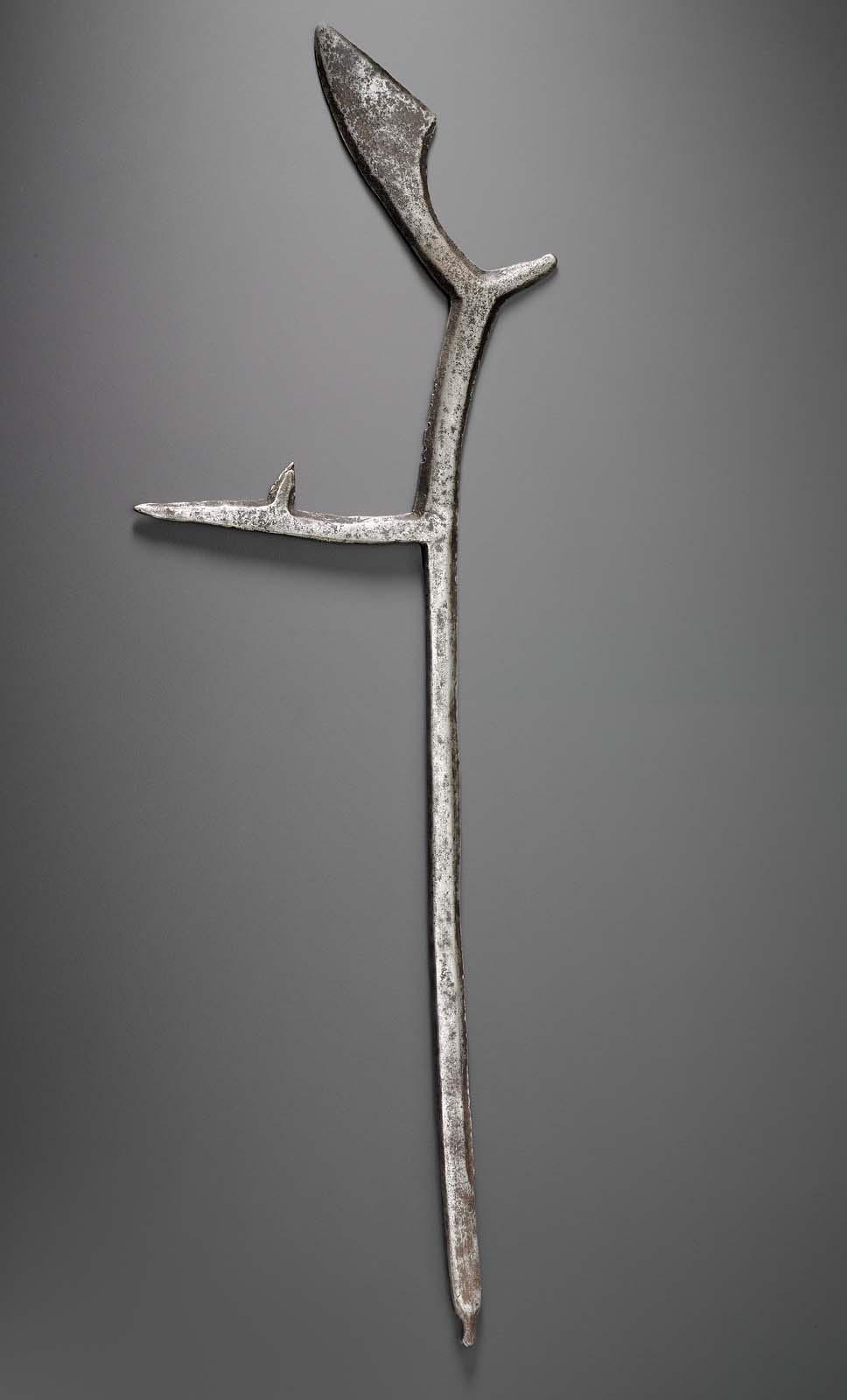Advanced Search 

Throwing knife
Laka
20th century
Object Place: Cameroon; Chad
Medium/Technique
Forged iron
Dimensions
Overall: 54.6 cm (21 1/2 in.)
Credit Line
Anonymous gift
Accession Number2008.1634
NOT ON VIEW
CollectionsContemporary Art, Africa and Oceania
ClassificationsMetalwork
Scholars identify this distinctive blade style as a naga-til, the 'male' form of a pair of throwing knives, ngéégue being the female form. The pair, known as miya-bo, were highly revered and sacred relics that were protected by Laka leaders.
Throwing knives were the most important weapons among people who identify as Laka or Sara. These large throwing knives were used as hurling missiles in war and hunting, slashing tools for cutting reed and thatching, and as dueling weapons. In addition to their functional uses, they were displayed ceremonially: brandished by women, they represented potent spiritual symbols. Laka and Sara smiths did not add handles to these multi-functional implements.
Weapons of this type are consistently labeled as made by Laka smiths, incorrectly implying that they are the product of one single cohesive group. In fact, there are numerous groups inhabiting the western section of the Logone River basin, including the Laka-Ngambaye, the Massa-Musseye, the Mbum-Lakka, the Marba, the Wina, and the Guisey, all of whom have produced and used weapons like this one. The overarching term 'Laka' was likely applied by French and German occupying officers, who oversimplified the identities of people living in the many different polities in the region.
Throwing knives were the most important weapons among people who identify as Laka or Sara. These large throwing knives were used as hurling missiles in war and hunting, slashing tools for cutting reed and thatching, and as dueling weapons. In addition to their functional uses, they were displayed ceremonially: brandished by women, they represented potent spiritual symbols. Laka and Sara smiths did not add handles to these multi-functional implements.
Weapons of this type are consistently labeled as made by Laka smiths, incorrectly implying that they are the product of one single cohesive group. In fact, there are numerous groups inhabiting the western section of the Logone River basin, including the Laka-Ngambaye, the Massa-Musseye, the Mbum-Lakka, the Marba, the Wina, and the Guisey, all of whom have produced and used weapons like this one. The overarching term 'Laka' was likely applied by French and German occupying officers, who oversimplified the identities of people living in the many different polities in the region.
Provenance1999, acquired in Brussels by anonymous donors; 2008, anonymous year-end gift to the MFA. (Accession date: January 21, 2009)
